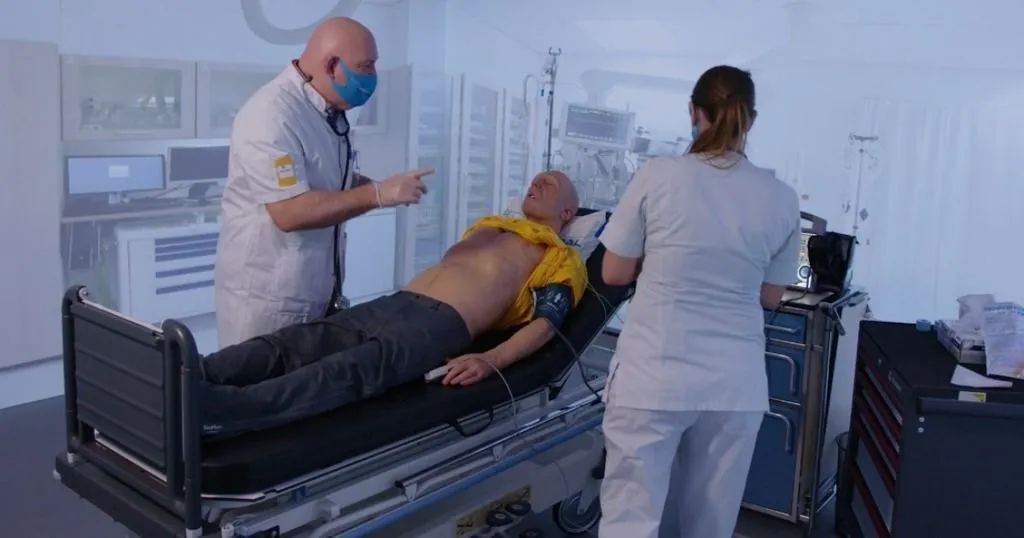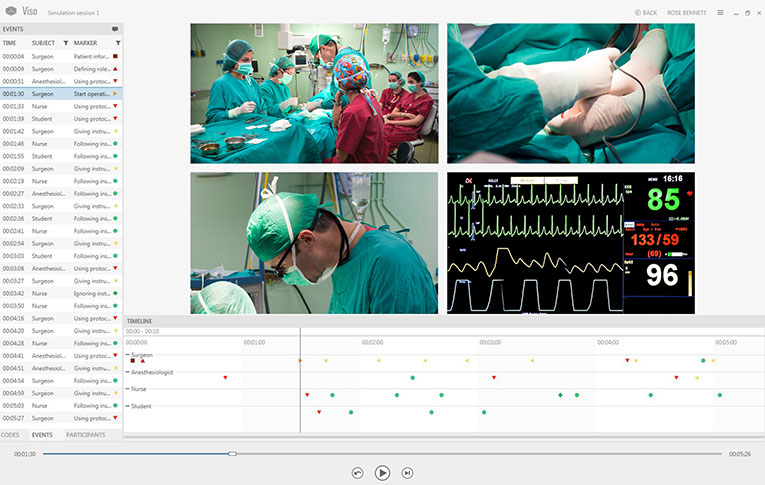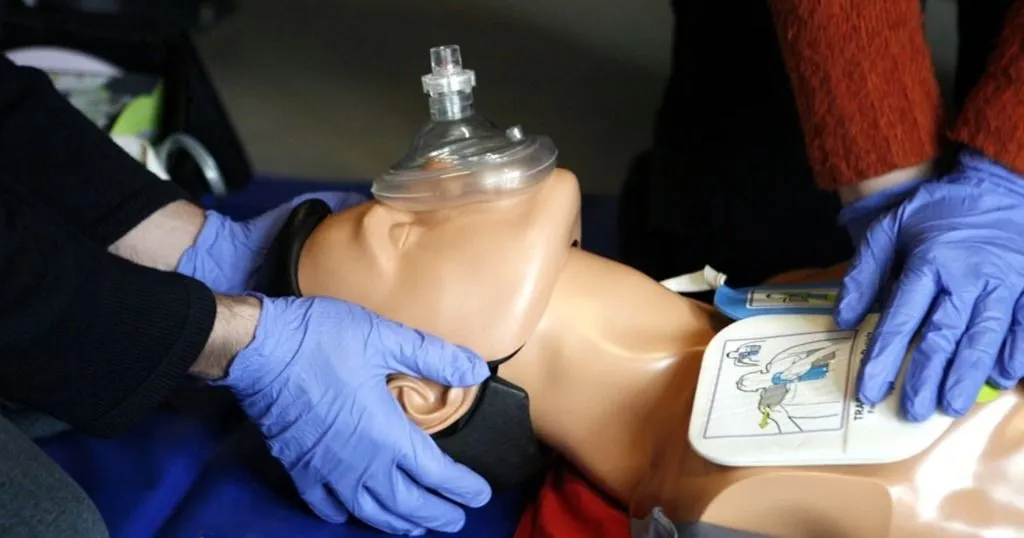What is simulation-based training?
Simulation-based training provides learners with an opportunity to test out different scenarios to see what works and to understand how they arrived at the right and wrong answers.
Posted by
Published on
Mon 14 Feb. 2022
Topics
| Medical Encounter | Patient Safety | Simulation-based Training | Teamwork | The Observer XT | Video Observation | Viso | Video Feedback | Healthcare | Debriefing |

The word “simulation” implies an imitation of a real-life process in order to provide a lifelike experience in a controlled environment. It can be thought of as somewhere to learn from mistakes without doing any damage.
What is simulation-based training?
Simulation trainings are used as a tool to teach trainees about the skills needed in the real world. Simulation-based training replicates real-world scenarios for immersive, risk-free practice. It helps learners refine skills, build confidence, and make better decisions, bridging theory and practical application effectively. This provides a lifelike point-of-care learning experience, and has been widely applied in fields such as aviation, the military, and healthcare.
The added value of simulation-based training
A well-constructed simulation allows trainees to answer the question, “If I do this, what happens?" It provides learners with an opportunity to test out different scenarios to see what works and to understand how they arrived at the right and wrong answers. This trial-and-error approach gives trainees the knowledge and confidence they need to apply their new skills in the real world.
The value of simulation training is further enhanced by following up with a debriefing and coaching session. With the help of video recordings, the training sessions can be analyzed, errors identified, successes marked, and emotions or feelings that influenced the trainees can be discussed. This is when the real learning takes place.

Five reasons why simulation training in healthcare works
The highest goal for every healthcare worker is to improve the quality of a patient’s life and to ensure patient safety. Training simulators and simulation-based training can achieve that for the following reasons:
1. Practicing in a safe environment
Training simulators are an invaluable tool when it comes to teaching and training. They provide a realistic, interactive learning environment with real-world scenarios that can help enhance the educational experience. In a simulation facility, preferably in a real clinical area where the staff normally works, you can test new tools and methods, focus on crisis resource management, and develop knowledge, skills, and attitudes in a safe and secure environment. It is important for the trainees to be assured that the simulations are confidential, and that video recordings are private.
2. Understanding human behavior
Simulating events show us how we react in real life situations, and in some sense, show us how unconscious processes work. Since it is not occurring in real life, it enables us to learn from our mistakes. As such, it can help prevent errors and optimize responses in (critical) situations. For example, noise, a bad smell, or other disturbances can be simulated, and can give a good feel for how distraction works.
In the experimental study conducted by Jessica Jones and her colleagues, the researchers examined the impact of clinical interruptions on simulated trainee performances during central venous catheterization (CVC). They found that interruptions during the experimental condition resulted in a number of serious procedural errors. The reduction in performance, time taken, and number of attempts made was significantly worse when the interruption occurred during a more complex part of the procedure.
3. Improving teamwork
Teamwork includes behaviors such as effective communication, collaboration, team leading, team building, and crisis resource management. Teamwork is not an automatic consequence of placing people together in the same room; it depends on a willingness to cooperate toward shared goals.
In healthcare, shared goals might include maintaining a patient's health status and avoiding errors. In a simulated environment, teamwork can be studied and significantly improved by training specific teamwork skills.
4. Providing confidence
Simulation training provides an opportunity to apply theory and gain experience in skills or procedures, which provides trainees with the confidence to manage similar real-life scenarios. Confidence is directly linked to competence. For example, the robust communication skills needed when interacting with patients requires being able to handle the situation with confidence.
As trainees gain confidence, they are more comfortable in making their own decisions and exerting their autonomy. As well as confidence being essential for an individual, demonstrating confidence is important for the patients who have put a lot of trust in healthcare professionals.
5. Giving insight into trainees’ own behavior
In a simulation facility, you can record the training sessions on video. By expanding the video recording with an eye tracker or data acquisition system to measure eye gaze behavior or physiological responses of the trainees, even more insight into behavior can be gained. Immediately after the session, the video recordings can be shown with all other data during debriefing, giving a complete picture.
Using realistic scenarios
For years, simulation-based training uses mannequins, i.e. fully bodied patient simulators for safe training of technical medical skills. Adding an immersive room to a simulation-based training enhances the lifelike experience even further. By projecting a scene on three surrounding walls, it actually feels like you are in that scene. The experience is complete by adding elements such as smell and temperature.
Transform a team of experts into an expert team
Clearly, the major role of simulation is to educate, train, and provide rehearsal for those actually preparing for or working in the delivery of healthcare. Simulation-based training can transform a team of experts into an expert team.
The user-friendly software suite Viso is an ideal recording solution for simulation training. With Viso, recordings are easily captured, and immediate viewing facilitates debriefing after each scenario.
FREE WHITE PAPER: Simulation-based training
Simulation-based training is an important part of the development and learning process of knowledge and skills.
- 5 reasons why
- Practical examples
- Innovative solutions
Interested in human behavior research? Also read: 'How to study human behavior'!
References
- https://en.wikipedia.org/wiki/Training_simulation
- Gaba, DM (2004). The future vision of simulation in health care. Qual Saf Health Care 2004;13 (Suppl 1):i2–i10. doi: 10.1136/qshc.2004.009878
- Jones, J.; Wilkins, M.; Caird, J.; Kaba, A.; Cheng, A. & Ma. I.W.Y. (2017). An experimental study on the impact of clinical interruptions on simulated trainee performances of central venous catheterization. Advances in Simulation,2 (5), DOI 10.1186/s41077-017-0038-1
- Weaver, S.J.; Dy, S.M.; Rosen, M.A. (2014). Team training in healthcare: a narrative synthesis of the literature. BMJ Quality & Safety, 23, 359-372.
- Wang Z, Liu Q, Wang H. Medical simulation-based education improves medicos’ clinical skills. J Biomed Res. 2013; 27(2):81–84.
Related Posts

Organized chaos or well-oiled machine? Optimizing safety & efficiency in an OR

Evaluating ergonomics in healthcare – paramedics
